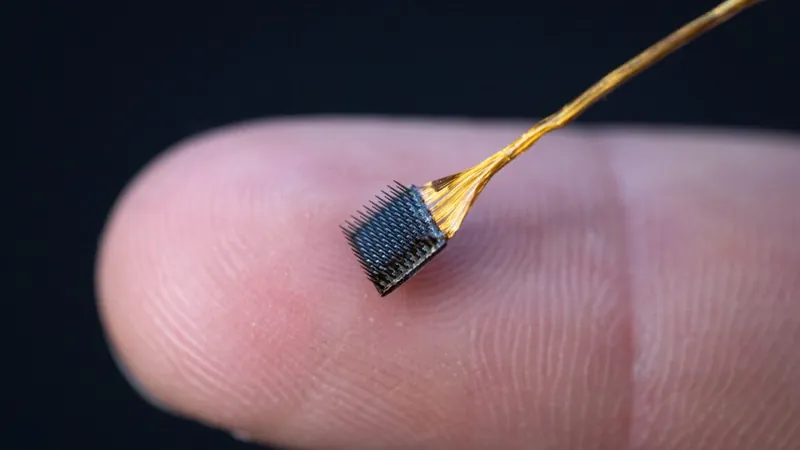
Mind-Reading Technology Raises Privacy Alarm: Inside the Breakthrough at Stanford
2025-08-23
Author: Lok
A Revolutionary Breakthrough in Brain-Computer Interfaces
Imagine a technology that can translate your thoughts into spoken words without you moving a muscle. Researchers at Stanford University are pushing the boundary of what's possible with brain-computer interfaces (BCIs) by developing a method to decode inner speech—the private conversations we have with ourselves during silent reading and internal monologues.
The Challenge of Speech Decoding
Traditionally, most BCIs have focused on interpreting attempted speech by recording signals from brain areas linked to muscle movement, a method that requires physically trying to speak. For individuals suffering from severe paralysis, like ALS patients, this approach can be exhausting and impractical. That’s where the innovation at Stanford comes in: decoding silent speech directly from the brain, eliminating the need for muscle engagement.
A Groundbreaking Approach: Decoding the Unspoken
Led by neuroscientists Benyamin Meschede Abramovich Krasa and Erin M. Kunz, the team began by training AI algorithms to interpret neural signals associated with inner speech. They tested this on four paralyzed participants who had microelectrode arrays inserted in their motor cortices. Through tasks like listening to words and silent reading, they could identify neural patterns related to inner thoughts, ultimately revealing the eerily accidental ability of BCI systems to interpret inner speech.
Mental Privacy in the Spotlight
However, this discovery prompts significant privacy concerns. Imagine your most intimate thoughts being inadvertently decoded! Previous systems struggled with inner and attempted speech differentiation, but Krasa's team devised innovative safeguards to protect users’ mental privacy.
Innovative Safeguards: Keeping Your Thoughts Private
One safeguard automatically differentiates between brain signals for inner and attempted speech. By training AI decoders to ignore inner speech signals, the system aims to prevent unwanted intrusions into thoughts. The second safeguard employs a mental 'password'—a phrase participants must imagine saying to activate the BCI, which boasts a 98% recognition accuracy.
Pushing the Limits of Inner Speech Decoding
In initial trials, the BCI exhibited promising results, achieving up to 86% accuracy when participants focused on short phrases. Yet, when tested with complex or unstructured thoughts, the system struggled. In attempts to decode more intricate phrases, like a favorite food or quote, the results often devolved into incoherence.
Future Prospects: Transforming Communication for the Voiceless
While the inner speech BCI remains a proof of concept with too high error rates for regular use, the research opens exciting avenues. Krasa and his team are exploring how quickly inner speech BCIs can operate compared to traditional speech prosthetics. Additionally, they’re investigating the technology’s potential for patients with aphasia, who can physically control their mouths but struggle to articulate words.
Conclusion: A New Era of Thought Translation is on the Horizon
This groundbreaking research marks a thrilling, if cautious, step towards bridging the gap between thoughts and communication. As scientists delve deeper into the mysteries of the brain, the implications for privacy, accessibility, and understanding of human thought continue to unfold, ushering in a new era of neurological exploration.


 Brasil (PT)
Brasil (PT)
 Canada (EN)
Canada (EN)
 Chile (ES)
Chile (ES)
 Česko (CS)
Česko (CS)
 대한민국 (KO)
대한민국 (KO)
 España (ES)
España (ES)
 France (FR)
France (FR)
 Hong Kong (EN)
Hong Kong (EN)
 Italia (IT)
Italia (IT)
 日本 (JA)
日本 (JA)
 Magyarország (HU)
Magyarország (HU)
 Norge (NO)
Norge (NO)
 Polska (PL)
Polska (PL)
 Schweiz (DE)
Schweiz (DE)
 Singapore (EN)
Singapore (EN)
 Sverige (SV)
Sverige (SV)
 Suomi (FI)
Suomi (FI)
 Türkiye (TR)
Türkiye (TR)
 الإمارات العربية المتحدة (AR)
الإمارات العربية المتحدة (AR)